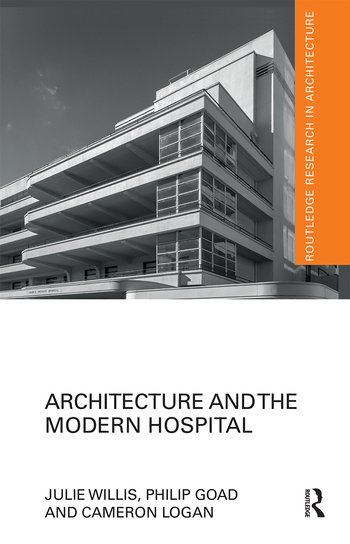Architecture and the Modern Hospital Nosokomeion to Hygeia
This book explores the rapid evolution of hospital design in the twentieth century, analysing the ways in which architects and other specialists reimagined the modern hospital. It examines how the vast expansion of medical institutions over the course of the century was enabled by new approaches to architectural design and it highlights the emerging political conviction that physical health would become the cornerstone of human welfare.
More than any other building type in the twentieth century, the hospital was connected to transformations in the health of populations and expectations of lifespan. Architecture and the Modern Hospital Nosokomeion to Hygeia, by Julie Willis, Cameron Logan, and Philip Goad, explores the rapid evolution of hospital design in the twentieth century, analysing the ways in which architects and other specialists reimagined the modern hospital.

Image Credit: Paimio Tuberculosis Sanatorium, Paimio, Finland. Architect: Alvar Aalto, 1928-1932. Photograph : Gustaf Welin, 1933
From the scale of public health to the level of the individual, the architecture of the modern hospital has reshaped knowledge about health and disease and perceptions of bodily integrity and security. However, the rich and genuinely global architectural history of these hospitals is poorly understood and largely forgotten.

Book Cover | Published:Routledge, 2019
It examines how the vast expansion of medical institutions over the course of the century was enabled by new approaches to architectural design and it highlights the emerging political conviction that physical health would become the cornerstone of human welfare.
Biography
Julie Willis is Professor of Architecture and Dean of the Faculty of Architecture, Building and Planning at the University of Melbourne, Australia. She is a distinguished architectural scholar, with expertise in Australian architectural history of the late nineteenth and twentieth centuries. Her current research examines the transmission and translation of architectural knowledge through professional networks in architecture. Major works include the Encyclopedia of Australian Architecture (2012, with Philip Goad) and, with Kate Darian-Smith, the recently published edited collection Designing Schools: Space, Place and Pedagogy (Routledge, 2017).
Philip Goad is Redmond Barry Distinguished Professor and Chair of Architecture at the Faculty of Architecture, Building and Planning at the University of Melbourne, Australia. He is an architect and architectural historian, and is renowned for his extensive scholarship on modern Australian architecture. His current research examines the role and influence of the Bauhaus on Australian architecture. His most recent book, with Geoffrey London and Conrad Hamann, is An Unfinished Experiment in Living: Australian Houses 1950–65 (2017).
Cameron Logan is Senior Lecturer and Director of Heritage Conservation at the Sydney School of Architecture, Design and Planning at the University of Sydney, Australia. His work is concerned with civic culture, public architecture and the political, architectural and urban implications of heritage conservation practice. He is the author of Historic Capital: Preservation, Race and Real Estate in Washington, DC (2017).
For more information, and to purchase, please direct to the Routledge website.
Project Title
Architecture and the Modern Hospital Nosokomeion to Hygeia
Project Team
Prof Julie Willis (University of Melbourne)
Prof Philip Goad (University of Melbourne)
A/Prof Cameron Logan (University of Sydney)
Publisher
Routledge
Published : 2019
Contact
Prof Philip Goad (University of Melbourne)
p.goad@unimelb.edu.au